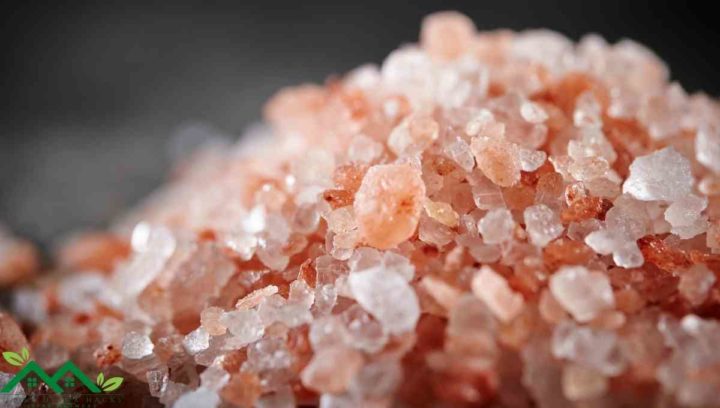Curing Salt Substitute

What’s the Best Curing Salt Substitute?
Curing salt is mainly used for curing and preserving meat, such as pastrami, pepperoni, and ham. Without curing salt, we wouldn’t be able to enjoy these foods.
But what if curing salt isn’t available in your area?
Easy! There are plenty of curing salt substitutes. They may not be as effective, but they cure meat just fine.
You May Also Be Interested In
- What Is a Good Creme De Cassis Substitute
- What Is a Good Substitute for Dill Seed
- Is Crème De Cassis the Same as Grenadine
- What is a Good Blue Cheese Substitute
The Best Curing Salt Alternatives
Most curing salt alternatives have a percent of nitrate because that’s what makes it different from regular table salt. Here are some excellent alternatives that are effective for curing meat.
Non-Iodized Sea Salt
Sea salt works for curing because it absorbs the water, pulling it from the cells. However, it should be non-iodized because iodized salt may leave a sour taste in your meat. It’ll still cure the meat, but it may change its taste slightly.
One more thing to remember: sea salt doesn’t contain nitrate. So, while it’ll still cure your meat, it’ll have a bigger chance of developing bacteria. To ensure safety, you should shorten the time of curing.
Celery Powder
This one may be weird because celery powder isn’t precisely a salt. However, it’s high in nitrate, so it works well for curing and preserving food. Plus, it’s organic and healthier than store-bought salt, which is a bonus.
It may leave a slight taste on the meat after curing it, but it’ll be barely noticeable.
Some people use celery powder for disinfecting purposes as well. It’s generally a versatile ingredient.
Kosher Salt
Kosher salt doesn’t have an effect as strong as curing salt, but it works well for light applications. Like sea salt, it absorbs the water via osmosis, making it a suitable choice for pickling foods and curing meat.
Kosher salt also doesn’t leave a bitter aftertaste; some people actually love it because it causes the meat to be tender before cooking it. It’d work well on tough pieces of meat.
Saltpeter
Saltpeter is the common name for potassium nitrate. Although it was initially meant for use in weaponry, it turned out to have good preservation properties.
So, if you don’t have curing salt available, you can use saltpeter instead. It absorbs the water out of the cells, killing the bacteria in the meat and curing it. It may need more time than curing salt, but it’ll work nevertheless.

Himalayan Salt Is A Good Alternative For Curing Salt
Himalayan salt is often used for regular cooking, and it’s not a suitable choice for curing meat because its effects aren’t as strong as curing salt. However, if you’re looking for an alternative to preserve your food for short durations, Himalayan salt is a suitable alternative.
Its effects aren’t long-term, but it preserves food just fine.
Vinegar
Due to its acidic properties, vinegar is a popular choice for preserving food and killing bacteria. If you’re using curing salt merely to make the meat tender and process it, you can use vinegar as an alternative.
Of course, it’s not suitable for curing because that process demands salt. But it’s a good substitute for the pre-cooking process.
Non-iodized Sea Salt
Non-iodized sea salt is just salt that has not had any iodine added to it. Iodine is an element or chemical molecule that people cannot produce under their own processes, which is why it is included to conventional table salt.
Sea salt really is a terrific way to season all of your dishes, particularly when used in seasoning plus dry rubs, since it adds a salty feel to the surface.
Although it is not an ideal curing solution, it will keep the food fresher for longer than normal salt.
Can I Make My Own Homemade Curing Salt?
Yes, if you don’t have or have run out of curing salt on hand, you may produce your homemade curing salt at home.
It’s incredibly simple to produce your homemade curing salt; all you want to do is combine two key components.

You’ll need lbs of table salt and 1 ounce of sodium nitrite.
If you don’t have any or enough table salt on hand, you may use sea salt. You may combine each of these items in a bowl once you have them.
Now that you have your combination, you can use it to cure your meat in an identical way as before with regular curing salt.
If you want some flavor to your cuisine, you might add some spices or herbs to the mix.
What Can You Use Instead of Pink Curing Salt?
Using pink curing salt is what you normally do, but if you have none left, then the best substitute that is often used is Himalayan salt.
It has a very similar color and is just as good.
What is Real Curing Salt?
Curing salt really is a salt that is employed to preserve food by curing. It is manufactured by combing sodium chloride, which is just standard table salt and plus some sodium nitrite.
The ratio is typically around 92% salt and 8% sodium nitrite.
